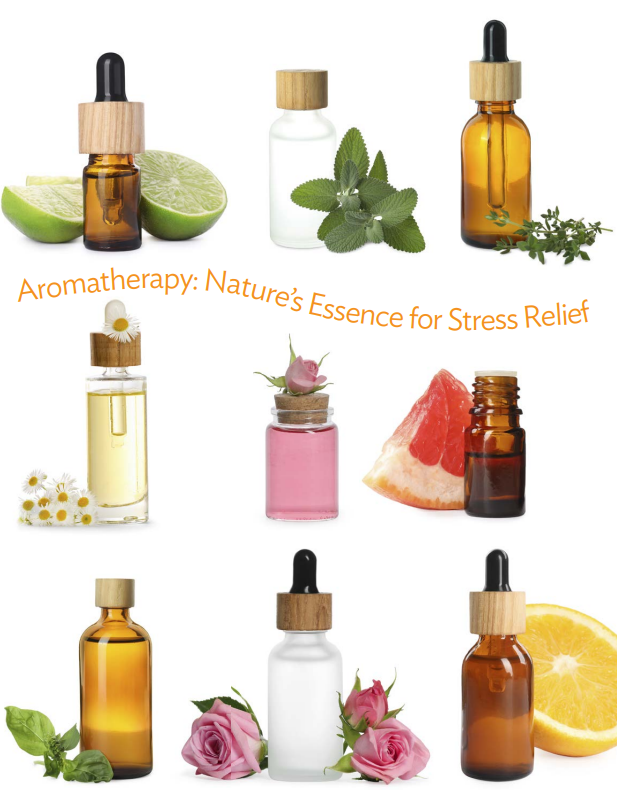
*This is an article from the Spring 2023 issue of Contentment Magazine.
By Lisa Rabens
Aromatherapy is the art and science of using pure essential oils to enhance health and well-being. Essential oils are volatile molecules extracted from organic plant material such as flowers, leaves, stems, bark, or resin and are made up of a mixture of chemical compounds. Plants produce these chemicals naturally to defend against disease, drought, or other environmental factors, attract beneficial insects, and communicate with other plants.1 The chemical profile of an essential oil correlates to the properties of the plant from which it is derived – essential oils are often called the “essence” of the plant.
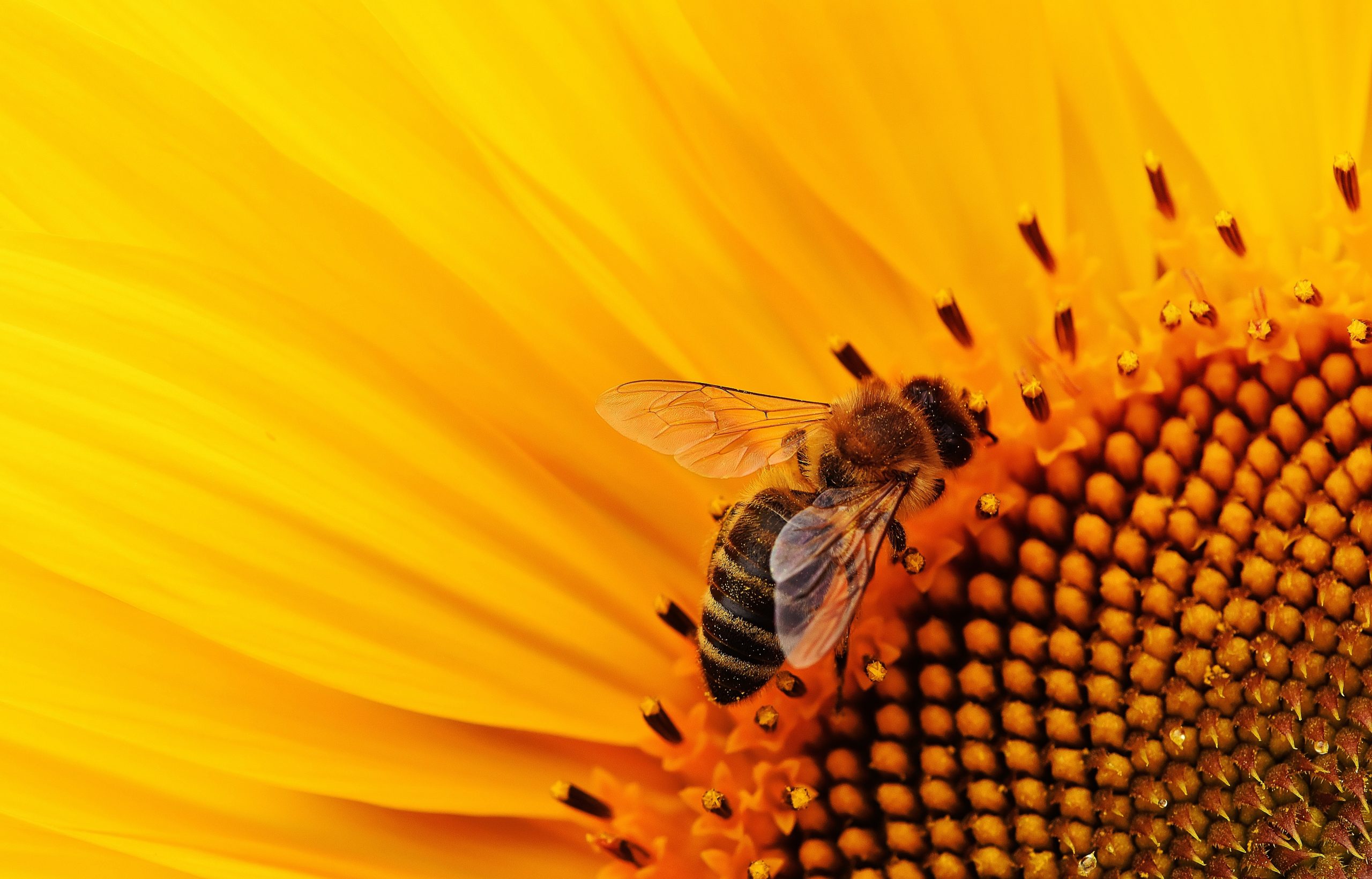
These volatile essences are highly concentrated – over one hundred times more than dried herbs – and contain a wide range of chemical constituents including active main ingredients, secondary components, and trace compounds. The diversity found in an essential oil’s profile provides a full spectrum of therapeutic properties, which is why purity and non-standardization are important in aromatherapy.
How Aromatherapy Works
The aromatic molecules that make up essential oils are absorbed by the body, usually through one of two methods.2 Through the process of inhalation, the molecules enter through the nasal cavity and come into contact with olfactory nerve receptors. This causes a reaction in the limbic system of the brain, which deals with memories, emotions, and instinctive behaviors. When applied topically, the molecules in essential oils are absorbed through the skin, particularly through the pores and hair follicles, and into the circulatory system via tiny capillaries. Once in the bloodstream they can circulate throughout the entire body affecting various organs and structures. Topical application may also involve a degree of inhalation, allowing the two methods to work in tandem to produce a therapeutic effect.
As the aromatic molecules enter the limbic system through olfactory nerve receptors or the bloodstream, they are analyzed and relayed to other parts of the central nervous system where they function to have both psychological and physiological effects.3 These beneficial effects can result in improved mood, increased relaxation, reduced pain, and stimulation of the immune system.
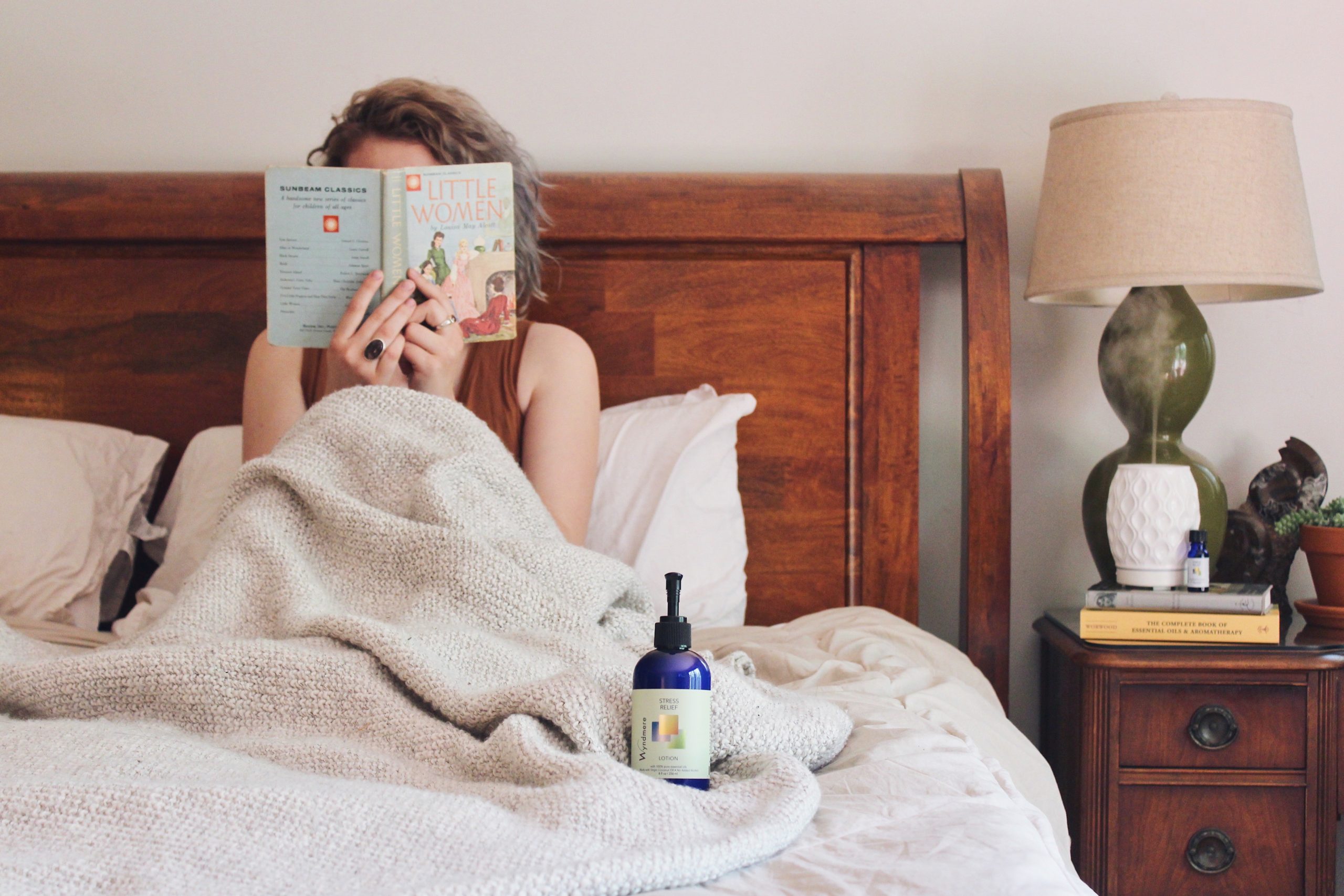
Aromatherapy and Stress: What’s the Connection?
Stress, both acute and chronic, can manifest itself in a wide range of physiological symptoms affecting nearly every system of the body.4 It can elevate blood pressure, cause muscle tightness, disrupt the endocrine and immune systems, and increase inflammation. The most commonly recommended stress management solutions include strategies that are all aimed at relaxation and supporting emotional wellness.5
Aromatherapy is often used in conjunction with stress reduction relaxation techniques such as therapeutic massage, meditation, and reflexology. For example, certain essential oils are also known to aid meditation by helping to clear the mind and relieve tension and worry. Essential oils can help counteract the physical manifestations of stress by affecting portions of the brain that produce various neurotransmitter chemicals. Chamomile (Anthemis nobilis) and Lavender (Lavandula angustifolia) essential oils may stimulate the part of the brain that produces serotonin, which has a sedative effect.6 Other essential oils can help relieve symptoms of stress by lowering blood pressure, reducing inflammation, strengthening the immune and nervous system, or invigorating and uplifting emotions.7
Experiencing Essential Oils
In recent years there has been a significant increase in research on the use of aromatherapy to relieve stress, insomnia, and anxiety. One of the reasons for this upsurge is because aromatherapy is a non-invasive, easy to administer, accessible, and is safe when used properly. It is also versatile in the sense that an individual has a selection of essential oils to choose from based on their specific needs and preferences at any given time.
The aromatic essence of an essential oil is experienced in a very individual and personal manner. The most common methods for using essential oils include: massage therapy and other topical applications like roll-ons, aromatic baths, room diffusers, and direct inhalation.
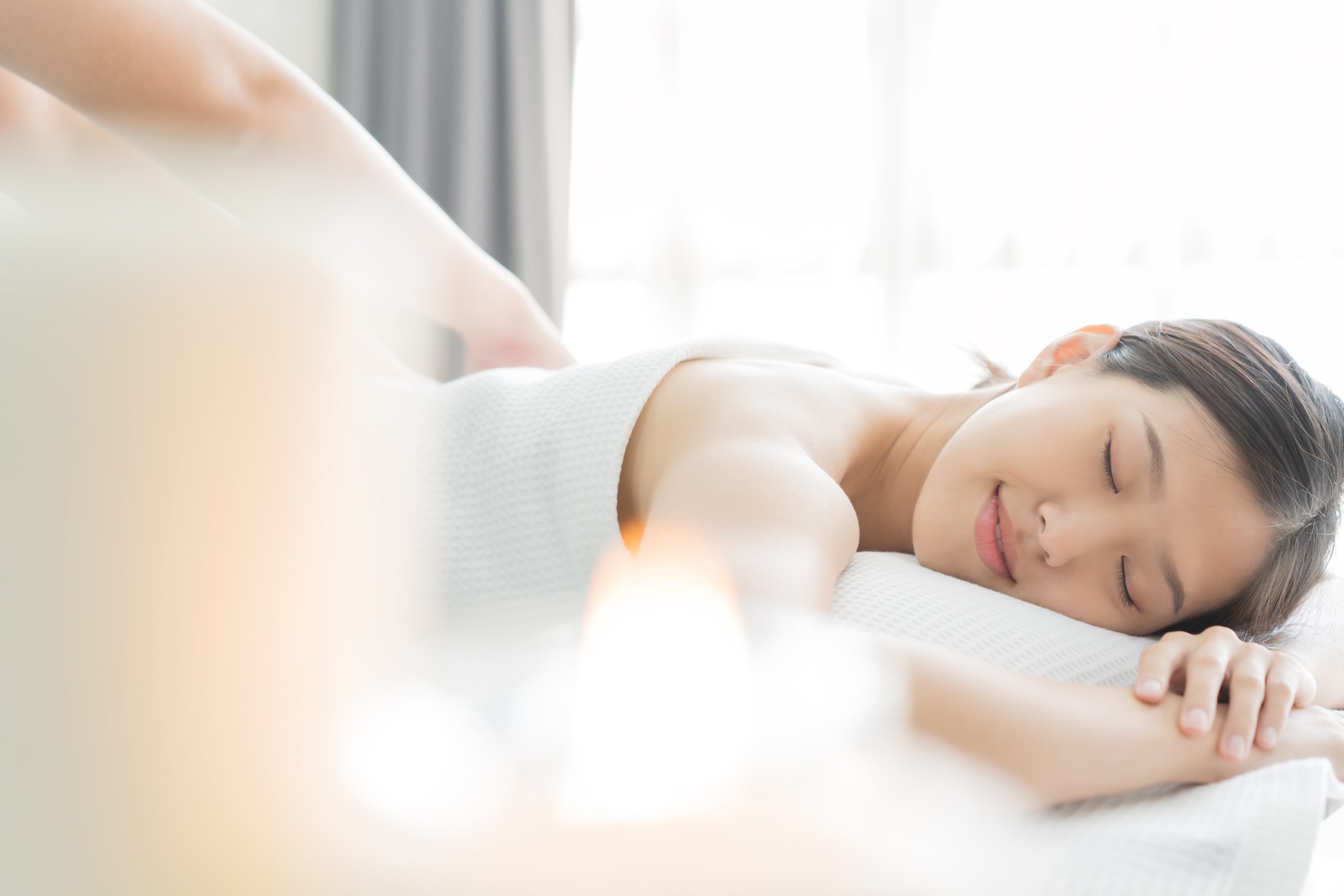
Massage Therapy
An aromatic massage can be an incredibly effective tool for reducing stress because it can ease muscle tension while providing emotional benefits. Essential oils like marjoram (Origanum majorana), lavender (Lavandula angustifolia), and coriander seed (Coriandrum sativum) work to relax stiff muscles caused by tension, relieve pain, and reduce inflammation. These essential oils owe their relaxant properties to their high content of terpene esters and alcohols, specifically linalol and linalyl acetate.8 The sedative and antispasmodic properties of these oils also have a soothing and balancing effect on emotions which make them ideal for use in aromatherapy massage. Other ways to apply essential oils topically include using a roll-on, which is pre-diluted and great for using on pulse points to relieve stress and symptoms like headaches.
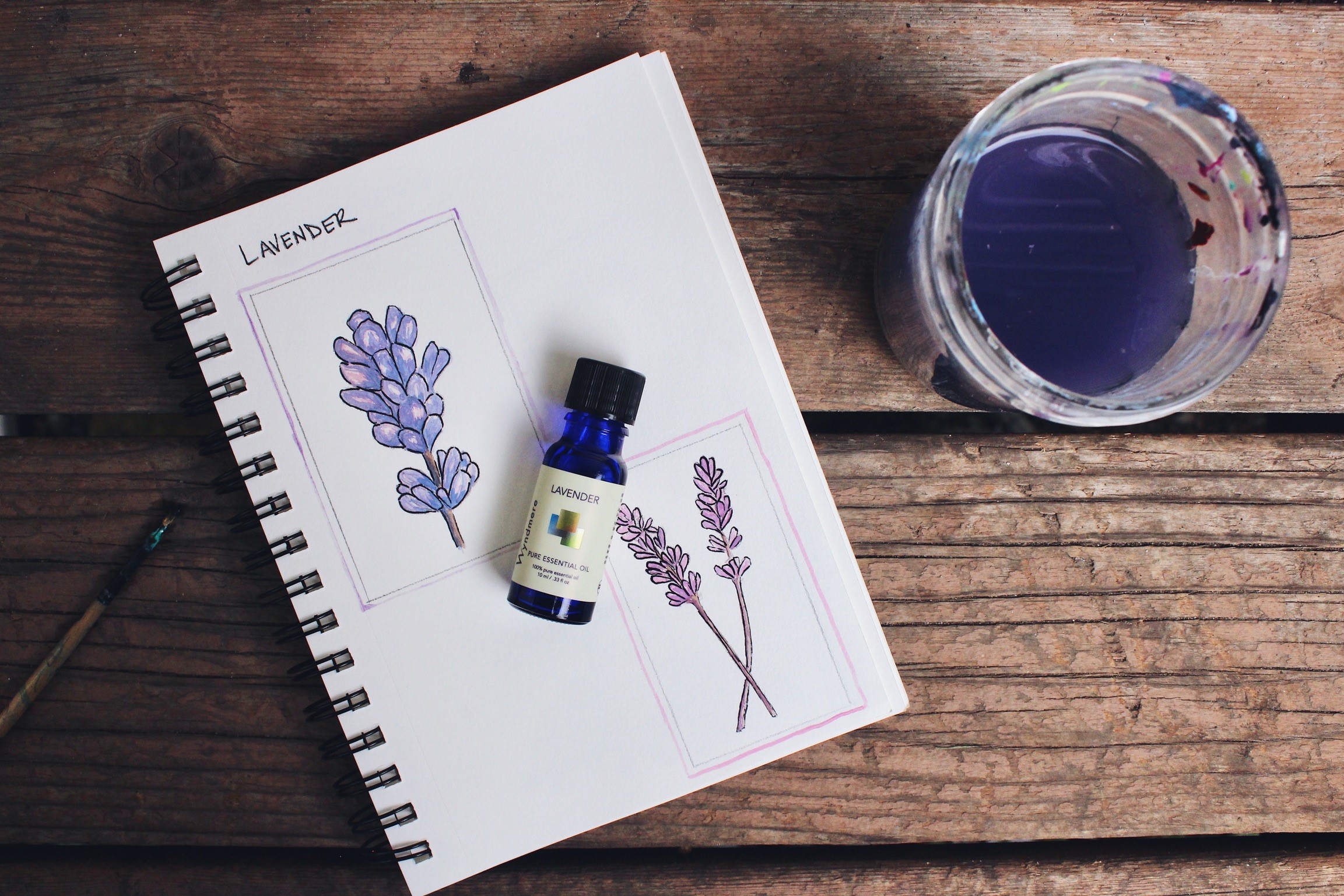
Aromatic Bath
Soaking in a warm bath is therapeutic on many levels, relaxing the muscles while soothing the mind. Adding essential oils to a warm bath can bring an added dimension by enhancing the overall relaxing effects. Lavender is a popular essential oil to add to the bath due to its gentle nature and soothing scent. Since essential oils can be irritating to the skin, add only a few drops of essential oils to a warm bath, since the warmth of the water causes the skin to be more receptive to absorbing the oils.
Room Diffusers
Aromatherapy diffusers have the ability to enhance the ambience of a room by creating a relaxing and soothing environment. Using a diffuser is the easiest and most effective method to achieve the full benefits of essential oils. Through the inhalation of essential oils, you can lift your mood, enhance sleep, and create a lovely aroma-filled living space.
Ultrasonic diffusers are a popular choice for dispersing essential oils into the air. This type of diffuser creates a cool and refreshing mist that subtly and consistently adds essential oils into the living space. Because they use ultrasonic vibrations to disperse the aromatic molecules, rather than heat, ultrasonic essential oil diffusers do not alter the chemical composition of the essential oils. This means that their aromas and therapeutic benefits are not affected in the diffusion process, maintaining their potency and effectiveness. Using an ultrasonic essential oil diffuser is a very natural and stress-free way to add aromatherapy into your daily routine to reduce stress levels.
Direct Inhalation
Although you breathe in the aromatic molecules during any topical application, direct inhalation is a common method of aromatherapy that is safe, effective, and easy. In addition to using a diffuser, you can also use various methods of passive diffusion that can be as simple as applying essential oils to a tissue or cotton ball and inhaling the aroma. There are also aromatherapy inhalers which are portable and convenient, or inhalation patches which adhere to your skin or clothing and allow you to benefit from aromatherapy hands-free.
Stress Reducing Essential Oils
Essential oils can contain over 100 components, which is why they can have a wide range of therapeutic benefits. Usually, one or two chemical components are found in a higher percentage and are thought of as the active ingredient that provides not only the aroma but also the therapeutic effects. These main constituents are supported by tens or sometimes hundreds of other types of molecules, all of which work together in synergy.9 Because of this synergy, an essential oil may be described as having seemingly opposite properties (e.g., uplifting and relaxing) that combine to have an overall stress-relieving effect.10
The following list describes some of the most effective aromatic plant essential oils, along with their primary active components for alleviating stress.11
- Bergamot (Citrus bergamia): Refreshing and uplifting (linalol) while balancing, relaxing, and soothing (linalyl acetate).
- Cedarwood (Cedrus atlantica): Can act as a nerve tonic and sedative, promotes meditation and clarity of thought (atlantone) and is calming (cedrol) which helps relieve anxiousness (caryophyllene).
- Chamomile, Roman (Anthemis nobilis): Powerfully soothing, balancing, reduces symptoms of shock, and promotes restful and deep sleep (esters).
- Lavender (Lavandula angustifolia): Relaxing, emotionally balancing, helps promote restful sleep (linalyl acetate), revitalizing, energizing without overly stimulating (linalol).
- Mandarin (Citrus reticulata): Soothes anxiousness, nervousness, and stress (citral, citronellal, methylanthranilate) while gently uplifting (limonene); generally regarded as safe to use with children.
- Rose (Rosa damascena): May help with mental fatigue, nervous exhaustion, and tension related to stress (farnesol, geraniol, nerol); emotionally stabilizing (citronellal).
- Sandalwood (Santalum album): Promotes a sense of inner peace, relaxation, and openness; grounding, reduces tension and worry (santalol).
- Ylang Ylang (Cananga odorata): Soothes and inhibits frustration, anger, and fear (geranyl acetate), balancing, calms nervous tension (linalol), may help lower blood pressure.12
The daily application of aromatherapy in one’s lifestyle is a viable means to help deactivate the stress response, while at the same time activating the relaxation response. Bring calm into your life by using nature’s aromatic essences.
References
- Schnaubelt, K. (1998). Advanced Aromatherapy: The Science of Essential Oil Therapy. Healing Arts Press. p.9.
- Cooksley, V.G. (1996). Aromatherapy: A Lifetime Guide to Healing with Essential Oils. Prentice Hall, Inc. p. 12-16.
- Buckle, J. (1997). Clinical Aromatherapy in Nursing. Arnold Publishing. Pp. 44-46.
- American Psychological Association. (2018, November 1). Stress Effects on the Body. https://www.apa.org/topics/stress/body
- Buckle, J. (1997). Clinical Aromatherapy in Nursing. Arnold Publishing. Pp. 168-169.
- Cooksley, V. (1996). Aromatherapy: A Lifetime Guide to Healing with Essential Oils. Prentice Hall, Inc. P. 222.
- Cantele, L. & Purchon, N. (2014). The Complete Aromatherapy & Essential Oils Handbook for Everyday Wellness. Robert Rose, Inc. Pp. 24-27.
- Lawless, J. (2013). The Encyclopedia of Essential Oils. Conari Press.
- Schnaubelt, K. (1998). Advanced Aromatherapy: The Science of Essential Oil Therapy. Healing Arts Press. p. 57.
- Lawless, J. (2013). The Encyclopedia of Essential Oils. Conari Press. pp. 15-17.
- Schnaubelt, K. (1998). Advanced Aromatherapy: The Science of Essential Oil Therapy. Healing Arts Press. pp. 58-95.
- Cantele, L. & Purchon, N. (2014). The Complete Aromatherapy & Essential Oils Handbook for Everyday Wellness. Robert Rose, Inc. P. 117.
ABOUT THE AUTHOR

Lisa Rabens is the operations manager for Wyndmere Naturals, a certified woman-owned company that produces aromatherapy products for wholesale and retail markets. Wyndmere is a family-run company that was founded in 1995. As operations manager, Lisa is responsible for working with suppliers to source and purchase essential oils that are pure, non-adulterated, and effective. She continually strives to fulfill Wyndmere’s commitment to producing high quality, therapeutically effective aromatherapy products with natural ingredients and sustainable packaging. Outside of Wyndmere she enjoys spending time with her family, reading and writing, hiking, and playing soccer.
Contentment Magazine
The dictionary defines “content” as being in a state of peaceful happiness. The AIS magazine is called Contentment because we want all of our guests and members to find contentment in their lives by learning about stress management and finding what works best for each them. Stress is unavoidable, and comes in many shapes and sizes that makes being in a state of peaceful happiness seem like a very lofty goal. But happiness is easy to find once you are able to find ways to manage your stress and keep a healthy perspective when going though difficult times in life. You will always have stress, but stress does not always have you!

Leave A Comment
You must be logged in to post a comment.